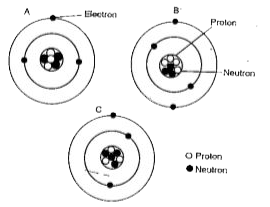What is the atomic number of the next halogen if discovered ?
85
117
167
104
The correct Answer is:B
To determine the atomic number of the next halogen if discovered, we can follow these steps:
Step 1: Identify the Halogen Group
The halogens are located in Group 17 of the periodic table. The known halogens include:
- Fluorine (F) - Atomic number 9
- Chlorine (Cl) - Atomic number 17
- Bromine (Br) - Atomic number 35
- Iodine (I) - Atomic number 53
- Astatine (At) - Atomic number 85
Step 2: Determine the Next Halogen
The next halogen after Astatine (At) would be the next element in Group 17.
Step 3: Find the Atomic Number of the Next Halogen
The atomic number of Astatine is 85. The next period in the periodic table is the 7th period, which can accommodate 32 elements.
Step 4: Calculate the Atomic Number of the Next Halogen
To find the atomic number of the next halogen, we add 32 to the atomic number of Astatine (85):
85+32=117
Conclusion
Therefore, the atomic number of the next halogen, if discovered, would be 117. This element is known as Tennessine (Ts).
Summary
The atomic number of the next halogen is 117.
---
The halogens are located in Group 17 of the periodic table. The known halogens include:
- Fluorine (F) - Atomic number 9
- Chlorine (Cl) - Atomic number 17
- Bromine (Br) - Atomic number 35
- Iodine (I) - Atomic number 53
- Astatine (At) - Atomic number 85
The next halogen after Astatine (At) would be the next element in Group 17.
The atomic number of Astatine is 85. The next period in the periodic table is the 7th period, which can accommodate 32 elements.
To find the atomic number of the next halogen, we add 32 to the atomic number of Astatine (85):
85+32=117
Therefore, the atomic number of the next halogen, if discovered, would be 117. This element is known as Tennessine (Ts).
The atomic number of the next halogen is 117.
Topper's Solved these Questions
- BOOK - DISHA PUBLICATIONCHAPTER - CLASSIFICATION OF ELEMENTS AND PERIODICITY IN PROPERTIESEXERCISE - Exercise -2 : Concept Applicator1videos
CLASSIFICATION OF ELEMENTS AND PERIODICITY IN PROPERTIES
- BOOK - DISHA PUBLICATIONCHAPTER - CLASSIFICATION OF ELEMENTS AND PERIODICITY IN PROPERTIESEXERCISE - Exercise -1 :Concept Builder (Topic 3)17videos
CLASSIFICATION OF ELEMENTS AND PERIODICITY IN PROPERTIES
- BOOK - DISHA PUBLICATIONCHAPTER - CHEMISTRY IN EVERDAY LIFE EXERCISE - Exercise88videos
CHEMISTRY IN EVERDAY LIFE
- BOOK - DISHA PUBLICATIONCHAPTER - COORDINATION COMPOUNDS EXERCISE - Exercise122videos
COORDINATION COMPOUNDS
Similar Questions
Knowledge Check
- Question 1 - Select One
What should be the atomic number of the next inert gas if discovered in future ?
A115B119C118D121 - Question 2 - Select One
Atomic number of next inert gas to be discovered will be
A87B104C118D132 - Question 3 - Select One
According to IUPAC norms an element has been named as Uun. The atomic number of the newly discovered element is
A111B112C109D110
What is the maximum number of electrons present in the main energy level in which the g subshell appears for the first time? Find the atomic number of the element to be discovered in which the dif- ferentiating electron is the only electron in the first 'g' subshell.
View SolutionWhat is the maximum number of electrons present in the main energy level in which the 'g' subshell appears for the first time? Find the atomic number of the element to be discovered in which the differentiating electron is the only electron in the first 'g' subshell
View SolutionIf number of electrons in an atom is 8 and number of protons is also 8, then (i) what is the atomic number of the atom? and (ii) what is the charge on the atoms ?
View SolutionWhat would be the atomic number of the next (i) alkali metal (ii) alkaline earth metal (ii) halogen and (iv) inert gas If discovered in future ?
View SolutionAs the atomic number of halogens increases. The halogens
View Solution


